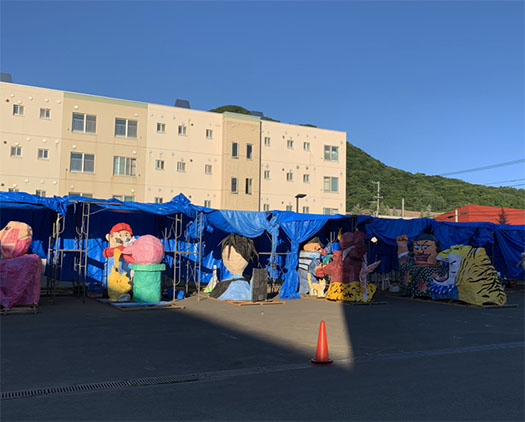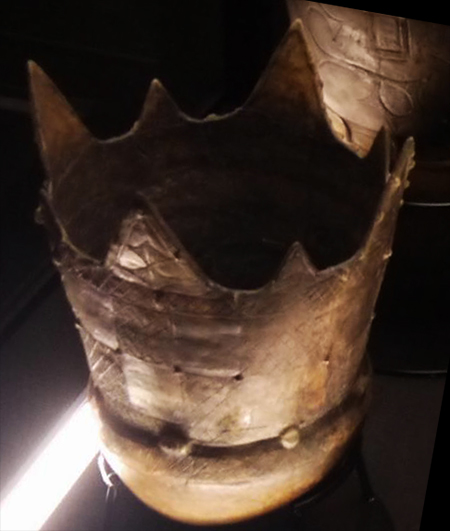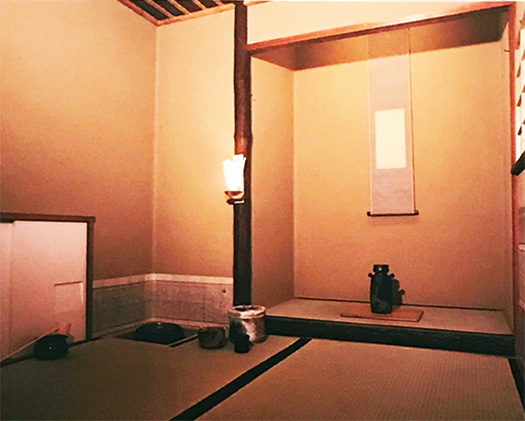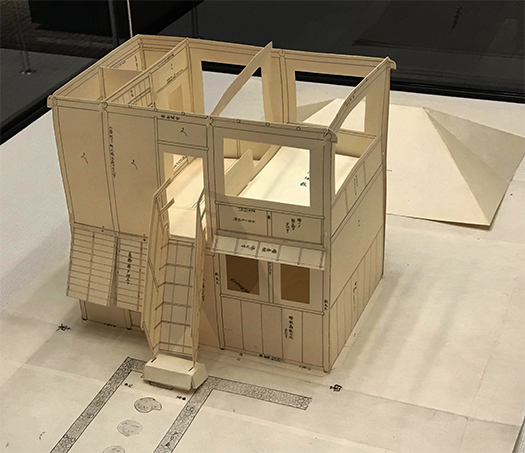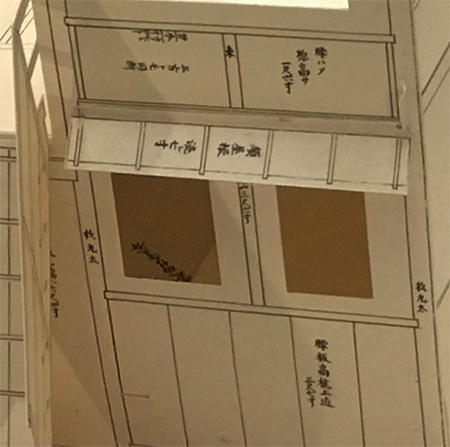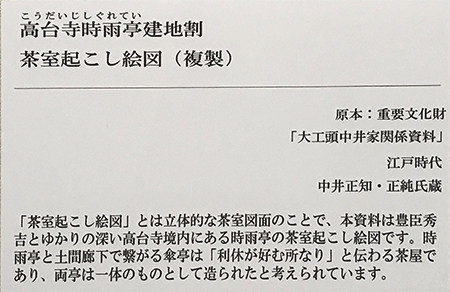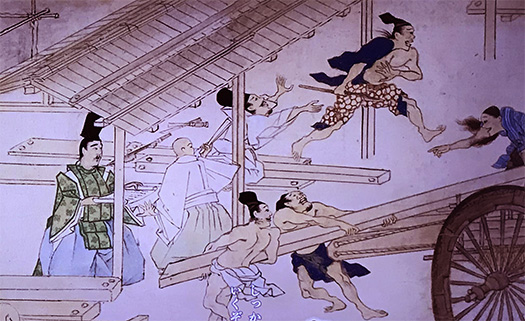

わたしは日本史・歴史が好きではありますが、
どうしても興味分野として時代区分的には興味の薄い時代がある。
それがちょうど宮廷内の人事抗争が主眼になっている平安期。
藤原氏による「摂関」政治に向かっていくプロセスの時代には
なんだかなぁ・・・という心理が否めず、ほとんど興味を持てなかった。
菅原道真のストーリーにはそれこそ上級国民貴族間のいざこざ感が否めず、
どうでもいいんじゃないか、という心理が抜けない。しかし、
今回、建築の様子が記録されている松崎天神縁起絵巻の伏線ストーリーとして
この菅原道真の事跡をあれこれ探索しております。
そこで興味を持てたのは、道真が本州を離れる現山口県・防府の松崎で
「同族の土師氏」の接遇を受けたという歴史事実であります。
きのうのブログで触れたのですが、本州島最西端の同族支配の土地で
恨み骨髄の心境を述べて「ここに住みたい」という嘆きをつぶやいていたという。
901年に菅原道真は左遷されて九州太宰府に移動していく。
で、彼の地で903年2月に死んでいる。
一方で菅原道真の「怨霊」信仰の発生きっかけとなった事実は以下のよう。
〜908年左遷の悪役・藤原菅根が病死。909年政敵・藤原時平が39歳で病死。
913年同・右大臣源光が狩りの最中に泥沼に沈んで溺死。
923年醍醐天皇の皇子で東宮の保明親王が薨御。日本紀略は道真の恨みとする。
923年5月には道真は従二位大宰員外師から右大臣に復され、正二位を贈られた。
930年皇居清涼殿が落雷を受け大納言はじめ朝廷要人に多くの死傷者が出た
(清涼殿落雷事件)上に目撃した醍醐天皇も体調を崩し3ヶ月後に崩御。〜
2枚目の絵巻絵はこの清涼殿落雷事件を伝える「北野天神縁起絵巻」。
予断だがこの絵柄が後に国宝絵画「風神雷神図屏風」のモチーフになる・・・。
こういう経緯から考えて、死後1年の904年に松崎天神は建築創建されている。
怨霊とされる事件が起こる前からすでに建築開始しているのですね。
それも「同族」の国司が在住する松崎の地で建築されたというのが象徴的。
日本史事実では平将門誕生も903年とされている。
939年には平将門が決起して反乱を起こしているので、
その後の歴史推移を考えて行けば、中央での上級国民貴族での政権運営が
まったく地方の経済勃興、政治支配の用には適合しなくなっていた。
土師氏という地域支配者は、こういう地方の声を自覚していて
ときの権門勢力の思惑とは離れ菅原道真のための天神社建築を始めたのだと推測。
天皇を中心とする貴族政治が社会の進歩発展とミスマッチしていたのではないか。
菅原道真への怨霊信仰というのは、政治体制への非常ベルだったのではと思える。
そのように考えて行くと、興味を持ちにくかった時代相に
ある軸線が生まれてくるような気がしてきます。
あるいは怨霊信仰が燃えさかっていくのには時の宮中政治争闘も関係して
この松崎天神の建築過程に大きな政治的力が働いていたとも思われる。
周防国の土師氏国司の負担だけでこの天神社が作られたとは考えにくい。
縁起からの周辺事実、政治動向へとスピンアウト気味ですが、
建築はこのような環境状況の中に作られたという意味で背景理解に役立つ。
上の絵巻絵は建築工事を監督している国司・土師氏かと思えますね。・・・
English version⬇
[Sugawara no Michizane’s “Grief” Phenomenon / Japanese Good House Special Edition ㊲-2]
I like Japanese history and history,
There are times when there is little interest in terms of era as an area of interest.
That is the Heian period, when personnel conflicts in the court are the main focus.
In the era of the process of moving toward “customs” politics by Mr. Fujiwara
I couldn’t deny the psychology of what it was, and I was hardly interested in it.
In the story of Sugawara no Michizane, it is undeniable that there is a sense of turmoil among senior national aristocrats.
I can’t get rid of the psychology that it doesn’t matter. but,
This time, as a hint story of Matsuzaki Tenjin Engi Emaki, which records the state of architecture
We are exploring the traces of Sugawara no Michizane.
What I was interested in was Matsuzaki in Hofu, Yamaguchi Prefecture, where Michizane left Honshu.
It is a historical fact that he was treated by the “Haji clan of the same family”.
As I mentioned in yesterday’s blog, in the westernmost land of Honshu Island, which is controlled by the same family.
It is said that he muttered a grudge saying “I want to live here”, stating the feelings of the bone marrow.
In 901, Sugawara no Michizane was relegated to Dazaifu, Kyushu.
And he died in his land in February 903.
On the other hand, the facts that triggered the emergence of Sugawara no Michizane’s “Goryo” belief are as follows.
~ 908 The villain of the relegation, Sugane Fujiwara, died of illness. In 909, Fujiwara no Tokihira, a political enemy, died of illness at the age of 39.
In 913, the Minister of the Right, Minamoto no Hikaru, sank in a swamp and drowned while hunting.
In 923, the prince of Emperor Daigo and Yasuakira-shin of the Togu. Nihon Kiryaku is a grudge against Michizane.
In May 923, Michizane was reinstated by the Minister of the Right from the second rank lieutenant, and was awarded the second rank.
In 930, Seiryoden Hall of the Imperial Palace was struck by lightning, causing many casualties to the court officials, including Dainagon.
(Seiryoden lightning strike incident) Emperor Daigo, who witnessed the above, also became ill and died three months later. ~
The second picture scroll is “Kitano Tenjin Engi Emaki,” which tells the story of the Seiryoden lightning strike.
Although it is a prejudice, this pattern will later become the motif of the national treasure painting “Fujin and Raijin Zuhoufu”.
Considering this background, Matsuzaki Tenjin was built in 904, one year after his death.
You have already started construction before the incident that is considered to be a grudge.
It is also symbolic that it was built in Matsuzaki, where the “family” Kokushi lives.
According to Japanese historical facts, Taira no Masakado was born in 903.
In 939, Taira no Masakado was upset and rebelled, so
Considering the history transition after that, the administration of the senior national aristocrats in the center
It was completely unsuitable for local economic rise and political control.
The local ruler, Mr. Haji, is aware of these local voices.
It is speculated that he started building a Tenjin shrine for Sugawara no Michizane, apart from the speculation of the powers of the time.
The aristocratic politics centered on the emperor may have been mismatched with the progress and development of society.
It seems that the grudge faith in Sugawara no Michizane was an emergency bell for the political system.
Thinking that way, it was difficult to get interested in the times.
I feel like a certain axis is born.
Or the burning of the ghostly belief is related to the political struggle of Miyanaka at that time.
It seems that a great political force was working in the construction process of Matsuzaki Tenjin.
It is unlikely that this Tenjin shrine was built solely at the expense of Mr. Haji Kokushi of Suo Province.
Peripheral facts from auspiciousness, it seems to spin out to political trends,
Architecture is useful for understanding the background in the sense that it was built in such an environmental situation.
I think the picture scroll above is Mr. Haji, the Kokushi who oversees the construction work.・ ・ ・
Posted on 7月 25th, 2021 by 三木 奎吾
Filed under: 住宅マーケティング, 歴史探訪 | No Comments »






